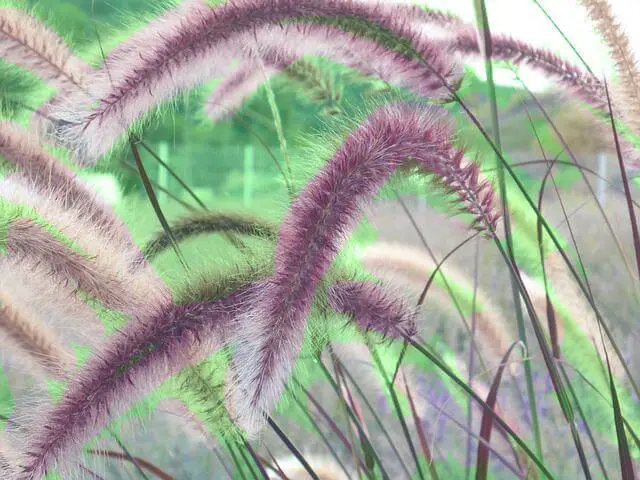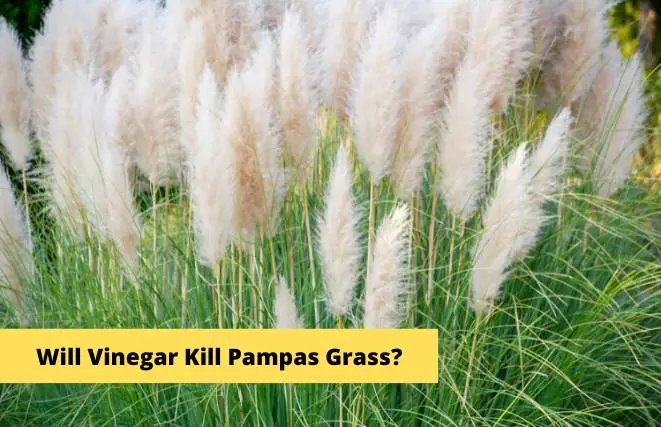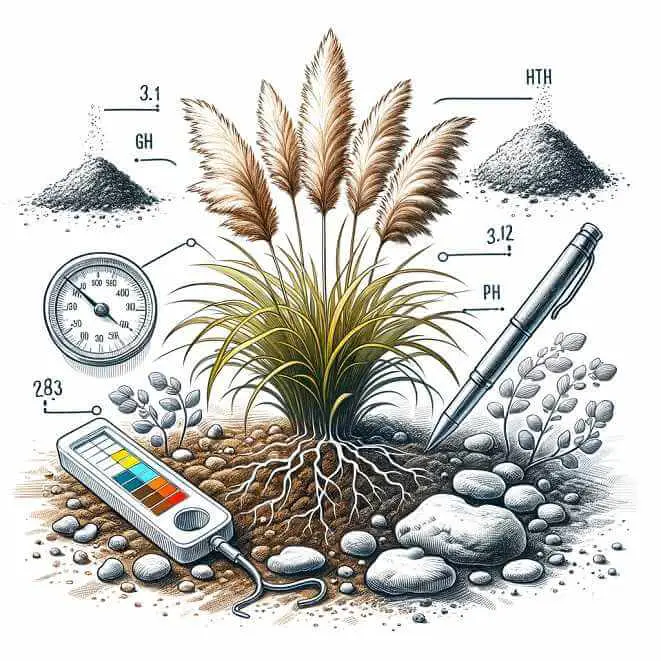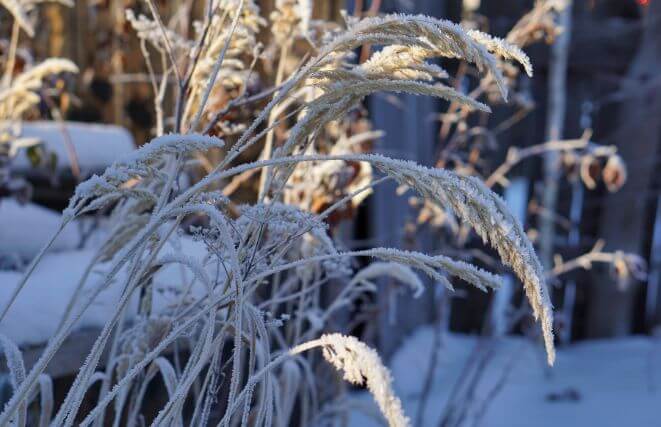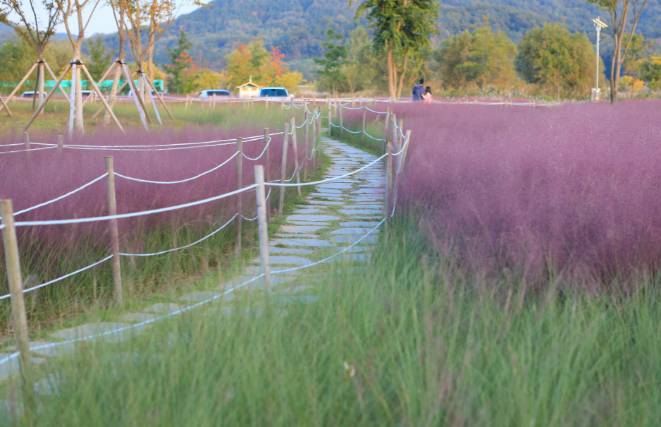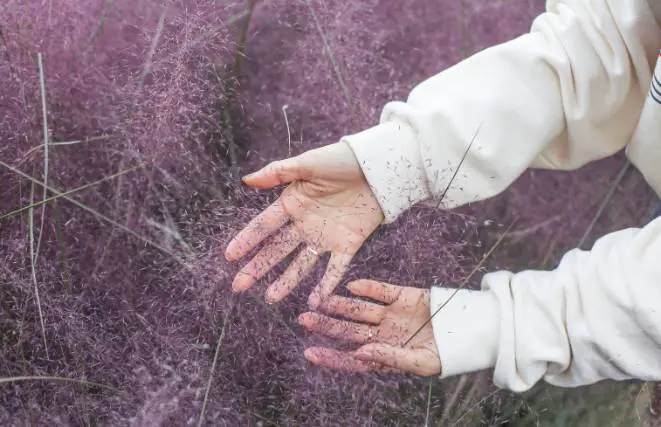With so many ornamental grasses out there, purple fountain grass – Pennisetum setaceum ‘Rubrum’ – is likely the most popular, and it is considered to be a tender perennial. It offers burgundy or purple foliage with fuzzy and soft blooms followed by purplish seed heads. It makes a bold statement within the garden, either on its own or with other plants. You’re going to find it very easy to grow purple fountain grass, and there’s little maintenance.
Therefore, this ornamental grass can’t survive through the cold weather, and it’s hardy in the warmer zones, such as 7, 8, and 9. Therefore, when planting purple fountain grass, consider this before you do it so that it returns each year. Often, cooler regions treat it like an annual.
| Plant Type | Ornamental Grass |
| Family (Botanic) | Poaceae (Grass family) |
| Scientific Name | Pennisetum setaceum ‘Rubrum’ |
| Height & Spread | Height: 2-4 feet |
| Spread: 2-3 feet | |
| Sun Exposure | Full sun to partial shade |
| USDA Growing Zones | Zones 9-11 |
| Water | Moderate water needs |
| Pests & Diseases | Generally resistant to pests and diseases |
| Soil Type | Well-drained soil |
| Soil pH | Neutral to slightly acidic (pH 6.0-7.0) |
| Bloom Time | Summer to fall |
| Flower Color | Reddish-purple or burgundy |
| Native Area | Africa, Middle East, and Southwest Asia |
It’s still possible to enjoy the plant every year when you put it in containers and bring it inside for the winter. You can also cut it back to about three inches and put it in a cool and sunny area of the house. Alternatively, it’s possible to put it in the basement.
Just make sure that you keep the purple fountain grass moist and water it once a month or so. When the freezing weather has gone away, and early spring comes around, set your beautiful purple fountain grass back outside.
Purple Fountain Grass Zone
Purple Fountain Grass (Pennisetum setaceum) is typically hardy in USDA hardiness zones 9-11. It thrives in warm climates with mild winters and long growing seasons. In these zones, the grass can be grown as a perennial, meaning it will come back year after year. However, in colder regions, it may not survive the winter and is often treated as an annual or grown as a container plant that can be brought indoors during the colder months.
| Hardiness Zone | Suitable for |
|---|---|
| USDA Zones 9 to 11 | Perennial; thrives in warm regions |
| USDA Zones 8 and below | Annual or tender perennial; may require winter protection |
If you live in a zone outside of the recommended range, it’s important to consider the specific climate and conditions in your area and consult with local gardening resources or experts for guidance on growing Purple Fountain Grass successfully.
Characteristics of Purple Fountain Grass
Appearance
Purple Fountain Grass, also known by its scientific name Pennisetum setaceum ‘Rubrum’, is a popular ornamental grass that is prized for its striking purple foliage. Its leaves are long and slender, and can range in color from green to deep burgundy, depending on the plant’s maturity and growing conditions. The grass also produces tall, feathery plumes that can reach up to two feet in height, adding texture and movement to any garden.
Growing Habits
Purple Fountain Grass is a warm-season grass that thrives in hot, sunny conditions. It’s native to tropical and subtropical regions of Africa, and is well-suited to growing in USDA hardiness zones 8-11. The grass is relatively easy to grow, and prefers well-drained soil that is kept evenly moist. It can also tolerate a range of soil types, from sandy to loamy.
Lifespan
Now, onto the big question: is Purple Fountain Grass a perennial or an annual? The answer is… it depends.
Understanding Perennial Plants
Definition of a Perennial Plant
As we mentioned earlier, a perennial plant is a plant that lives for more than two years. In the case of Purple Fountain Grass, this means that the plant should technically be able to survive for more than two growing seasons.
Comparison with Annual and Biennial Plants
Annual plants complete their entire life cycle (from seed to seed) in a single growing season. They typically grow quickly and produce abundant flowers or fruit, but do not survive through the winter.
Biennial plants, on the other hand, take two growing seasons to complete their life cycle. They grow foliage in their first year, and then produce flowers and fruit in their second year. After that, they usually die off.
Perennial plants, as we mentioned earlier, can survive through multiple growing seasons. They often take longer to mature than annual or biennial plants, but can provide years of enjoyment in the garden.
Factors that Affect Perennialism
There are several factors that can affect whether a plant is able to survive as a perennial. These include:
- Climate: Some plants are better suited to certain climates than others. For example, a plant that is adapted to hot, dry conditions may not survive in a cold, wet climate.
- Soil: Soil quality can also play a role in a plant’s ability to survive as a perennial. Plants that are adapted to nutrient-poor soils may struggle in soils that are too rich.
- Growing conditions: The way a plant is grown can also affect its longevity. Plants that are well-cared for and given optimal growing conditions are more likely to survive as perennials than plants that are neglected.
Perennial or Annual
Now, let’s take a closer look at whether Purple Fountain Grass is a perennial or an annual.
Evidence Supporting Perennialism
There is evidence to suggest that Purple Fountain Grass can survive as a perennial in certain growing conditions. For example, in its native habitat of tropical and subtropical Africa, the grass is known to be a long-lived perennial. It’s also been reported to survive as a perennial in areas with mild winters, such as parts of California and Florida.
In addition, some gardeners have reported successfully overwintering Purple Fountain Grass in colder climates by providing the plant with adequate protection, such as mulching or covering with a frost blanket.
Evidence Supporting Annualism
On the other hand, there is also evidence to suggest that Purple Fountain Grass is best grown as an annual. In colder climates, the plant may not survive the winter and will need to be replanted each year. In addition, even in milder climates, the plant may begin to decline after a few years of growth, and may need to be replaced.
Another factor to consider is that Purple Fountain Grass is not a true perennial, in the sense that it does not grow back from the same roots year after year. Instead, it grows from seed, which means that even if the plant does survive the winter, it may not produce the same characteristics as the previous year’s plant.
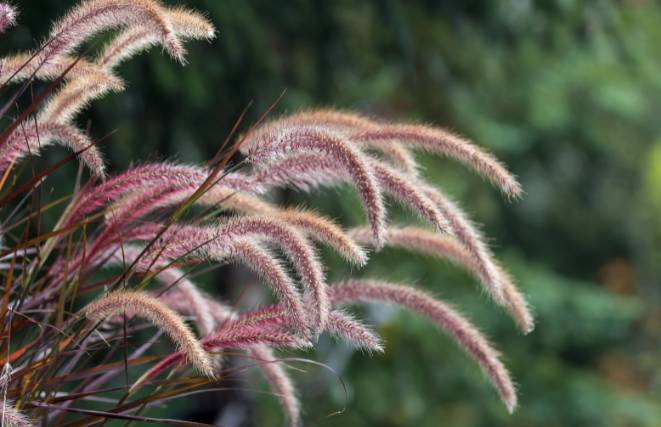
Benefits of Perennial Plants
Whether or not Purple Fountain Grass is a true perennial, there are many benefits to growing perennial plants in your garden. Here are just a few:
| Longevity | Perennial plants can provide years of enjoyment in the garden, offering consistent color and texture. |
| Cost-effectiveness | Once established, perennials require less maintenance and do not need to be replanted each year, saving time and money. |
| Environmental Benefits | Perennials help reduce soil erosion, improve soil health, and provide habitat for beneficial insects and wildlife. |
| Low Maintenance | Many perennials are hardy and require minimal care once established, making them a convenient choice for busy gardeners. |
| Seasonal Interest | Perennials often have varying bloom times, providing a succession of colors and textures throughout the growing season. |
| Naturalizing Ability | Some perennials have the ability to self-propagate and spread, filling in gaps in the garden and creating a lush landscape. |
| Versatility | Perennials come in a wide range of sizes, shapes, and colors, offering endless options for garden design and personal expression. |
| Pollinator Attraction | Many perennial flowers are attractive to pollinators like bees and butterflies, contributing to a healthy ecosystem. |
| Drought Tolerance | Some perennial plants have adapted to survive in dry conditions, requiring less water and making them suitable for xeriscaping. |
| Timeless Appeal | Perennials have a timeless charm and can create a sense of continuity in the garden, improving its overall aesthetic. |
Growing the Purple Grass
Purple fountain grass is a drought-tolerant plant and works well in warmer zones. It’s easy to maintain, and you’re going to like that you can plant it anytime. Spring is often the right choice for planting. The plant has to be put in a sunny spot, and well-draining soil is a must!
Mature plants can get about four feet tall and as wide as that. Give them enough room in the garden and keep other plants growing about 3 to 5 feet apart. You should dig a hole that’s deep and wide enough for the roots and give the purple fountain grass a thorough drink.
Caring for the Purple Fountain Grass
It’s easy to care for the purple fountain grass, and most gardeners like it for many reasons. Consider watering once a week or every other week when it’s in the garden. While it’s not required, it’s possible to give it an annual feeding of a balanced and slow-release fertilizer in the spring to stimulate new growth.
The right time to cut it back is in the fall before you bring it indoors. You may also find that if you leave it outside in warmer climates, it’s possible to bring it in during late winter. Growing is simple, and the care isn’t that hard, so this beautiful plant can bring happiness throughout the year.
Types of Purple Fountain Grass
There are a few different types or cultivars of Purple Fountain Grass (Pennisetum setaceum) that offer variations in color, size, and overall appearance. Here are a few notable ones:
- ‘Rubrum’: This is the most common cultivar, known for its deep purple foliage and dark purple to burgundy plumes. It’s a popular choice for its vibrant and striking appearance.
- ‘Fireworks’: This cultivar features variegated foliage with shades of burgundy, hot pink, and cream. It adds an extra element of color and interest to the landscape.
- ‘Sky Rocket’: This variety has unique burgundy and cream-striped foliage. It produces burgundy-red plumes that fade to tan as they age. It offers a distinctive look in the garden.
- ‘Cherry Sparkler’: This cultivar showcases green and white-striped foliage with hints of burgundy. The plumes emerge in shades of cream, transitioning to pink and then deep cherry red as they mature.
These are just a few examples of the different types of Purple Fountain Grass available. Each offers its own unique characteristics, allowing you to choose the one that best suits your desired aesthetic and garden design.
When does purple fountain grass come back?
Purple fountain grass (Pennisetum setaceum) is a popular ornamental grass known for its striking burgundy plumes and graceful, arching foliage. In many regions, especially those with mild winters, purple fountain grass can be treated as a perennial, and it often comes back in the spring.
Here’s a general timeline for when you can expect purple fountain grass to come back:
- Late Winter to Early Spring: In regions with mild winters (typically USDA hardiness zones 8-11), purple fountain grass may remain evergreen throughout the winter. In these areas, you can expect it to start showing signs of new growth in late winter to early spring. This is when you should consider pruning it to encourage healthy regrowth.
- Spring: As temperatures warm up and daylight hours increase, purple fountain grass will start to put out fresh shoots and foliage. This is a sign that it’s coming back from its winter dormancy.
- Late Spring to Early Summer: By late spring to early summer, purple fountain grass should be fully back and in its prime. It will produce new plumes, and its foliage will be lush and vibrant.
However, it’s important to note that in colder regions (zones 6 and below), purple fountain grass is often grown as an annual or treated as a tender perennial. In these areas, it may not survive the winter outdoors, and gardeners might choose to replant it in the spring.
To maximize the chances of your purple fountain grass coming back, provide it with proper care, including mulching around the base to protect the roots and providing winter protection in colder climates.
How to protect purple fountain grass in winter?
To safeguard Purple Fountain Grass (Pennisetum setaceum ‘Rubrum’) during winter, employ measures such as mulching around the base for root insulation, trimming back previous year’s growth in late winter, and considering division and indoor overwintering for container plants.
Offering protection from wind and snow with burlap, monitoring soil moisture, and providing gradual spring revival by increasing watering and transitioning back outdoors after frost risk diminishes are crucial steps in ensuring the grass’s survival and vibrant growth in the upcoming season.
Will purple fountain grass survive winter?
The survival of Purple Fountain Grass (Pennisetum setaceum ‘Rubrum’) through winter depends on the climate and care provided. In mild regions, with proper protection like mulching and trimming, it may endure the season.
In colder climates, overwintering indoors is advisable, either by potting and placing it in a cool, well-lit space, or treating it as an annual. Container-grown plants offer better control, as they can be moved indoors to shield against freezing temperatures. Factors such as mulching, wind protection, and snow coverage influence the grass’s chances of surviving in colder areas.
Is my purple fountain grass dead?
Determining if your Purple Fountain Grass (Pennisetum setaceum ‘Rubrum’) is dead involves assessing its appearance, performing a scratch test on the stem for green tissue, examining the roots for vitality, considering seasonal changes, and evaluating moisture levels.
While brown and dry foliage might indicate winter damage or death, it’s important to scratch the stem for signs of life and check the root system’s condition. The grass might appear dormant in early spring, and it’s advised to wait for warmer weather to see if new growth emerges.
How tall does purple fountain grass get?
Purple fountain grass (Pennisetum setaceum) typically reaches a height ranging from 2 to 4 feet (approximately 0.6 to 1.2 meters), but specific factors influence its final stature. Varietal differences, growing conditions, and climate all play a role. Some cultivars might be taller than others, while ideal conditions such as adequate sunlight and well-drained soil can encourage taller growth. Additionally, regions with extended growing seasons can allow the grass to attain its full height potential. Pruning in late winter or early spring can also help manage its size and maintain a more compact appearance.
Is purple fountain grass a perennial in Florida?
Purple fountain grass (Pennisetum setaceum ‘Rubrum’) is a tender perennial in Florida, meaning it can behave as a perennial in warmer regions of the state. However, its perennial status may vary depending on the specific microclimate and growing conditions within Florida. In some areas of the state, particularly in the southern regions with milder winters, purple fountain grass can survive and persist year-round, acting as a perennial ornamental grass. However, in colder regions of Florida or during unusually cold winters, it may experience dieback or require protection to survive.
Is purple fountain grass a perennial in North Carolina?
Purple fountain grass (Pennisetum setaceum ‘Rubrum’) is typically grown as an annual in North Carolina due to its sensitivity to cold temperatures. While it is a perennial in warmer regions, North Carolina’s colder winters can cause the plant to experience frost damage or die back. In areas with milder winters or if provided with protection, purple fountain grass may survive as a perennial. However, it is advisable to treat it as an annual in North Carolina unless you can provide proper winter protection.
FAQ
Purple Fountain Grass thrives in full sun, well-drained soil, and moderate watering. It is best suited for landscape beds, borders, mixed perennial beds, or as a standalone specimen. It can also be planted in containers or pots for a striking display. The grass can tolerate coastal conditions and is recommended for USDA hardiness zones 8-11, but can also be grown in colder zones with proper winter protection or as an annual. Considering these factors will help you choose the perfect location to showcase the vibrant beauty of Purple Fountain Grass in your garden.
Pennisetum setaceum rubrum, commonly known as Purple Fountain Grass, is not considered fully hardy in colder climates. It is typically hardy in USDA hardiness zones 9-11, where winters are mild and temperatures rarely drop below freezing. In these zones, Purple Fountain Grass can survive and regrow in the following spring. However, in colder zones, it is often treated as an annual or may require special winter protection, such as mulching or bringing the plant indoors during the colder months.
Purple Fountain Grass typically blooms from July to October, from late summer to early fall. The exact timing of its blooming period can vary depending on the specific climate and growing conditions. In general, you can expect to see the feathery plumes of Purple Fountain Grass emerge and reach their full bloom in the late summer months, adding a beautiful and decorative element to your garden or landscape. The plumes can persist throughout the fall season, providing visual interest and texture until the colder weather sets in.
READ MORE: Is Purple Fountain Grass Invasive
Conclusion
So, is Purple Fountain Grass a perennial or an annual? The answer is not straightforward, and depends on a variety of factors, including growing conditions and climate. While the plant may survive as a perennial in certain areas, it’s generally best grown as an annual in colder climates.
Regardless of its perennial status, Purple Fountain Grass remains a popular choice for gardeners looking to add color and texture to their gardens. And whether you prefer to grow perennials, annuals, or a combination of both, there are many benefits to be had from cultivating a beautiful and sustainable garden.

